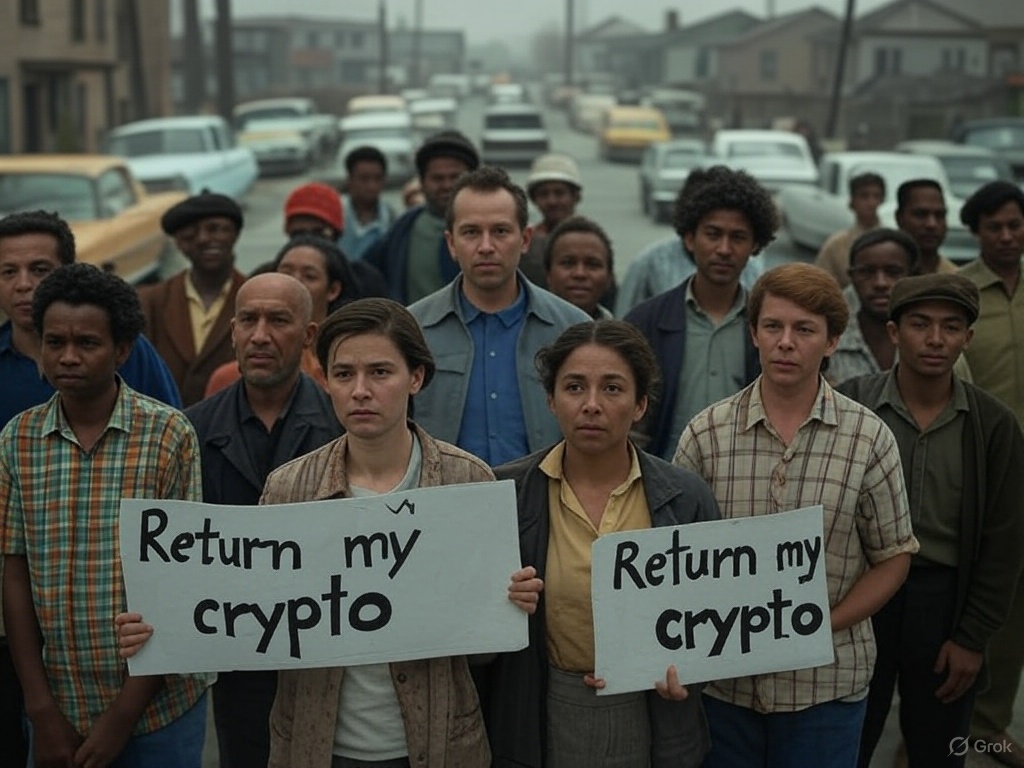Hello!
The cryptocurrency market has been a rollercoaster of innovation and devastation. Billions of dollars have vanished due to crashes, scams, and schemes, leaving investors with empty wallets and shattered dreams.
This article explores the dark side of crypto: money laundering, scams, collusion, and the myriad fraudsters exploiting the industry.
1. Crypto Crashes: Why Projects Collapse
Cryptocurrency projects often lure investors with promises of groundbreaking technology and massive returns. Yet, many turn out to be unsustainable or outright fraudulent.
 Key reasons for collapses include:
Key reasons for collapses include:
- Flawed Token Economics. Many projects issue tokens with inflated values unsupported by real products or services. When the bubble bursts, prices plummet.
- Mismanagement or Malice. Inexperienced teams—or worse, those with malicious intent—siphon off funds raised through Initial Coin Offerings (ICOs) or Initial DEX Offerings (IDOs).
- External Shocks. Hacks, regulatory crackdowns, or market downturns can obliterate even promising ventures.
A stark example is the 2022 Terra/LUNA collapse, where the algorithmic stablecoin UST lost its dollar peg, wiping out LUNA’s value and billions in investor funds.
2. Scams: Traps for the Trusting
Scams are rampant in crypto, designed to exploit greed and naivety.
 Common schemes include:
Common schemes include:
- Fake ICOs and Projects. Fraudsters craft polished websites, whitepapers, and fake teams to collect funds before vanishing. During the 2017–2018 ICO boom, such scams drained billions.
- Pump-and-Dump Schemes. Organized groups inflate obscure tokens’ prices (pump) before selling off (dump), leaving latecomers with worthless assets.
- Phishing and Impersonation. Fake wallets, exchanges, or social media accounts trick users into sharing private keys or sending funds.
- Rug Pulls. Developers abandon projects after raising money, pulling the rug out from under investors. DeFi protocols have been hit hard, with over $3 billion lost to rug pulls in 2021–2022 alone.
3. Money Laundering: Crypto’s Dark Underbelly
Cryptocurrencies’ pseudonymous nature makes them a magnet for money laundering.
 Criminals exploit decentralized platforms to obscure the origins of illicit funds:
Criminals exploit decentralized platforms to obscure the origins of illicit funds:
- Mixers and Tumblers. Services like Tornado Cash (before its sanctioning) blend dirty crypto with clean, making transactions harder to trace.
- Cross-Chain Bridges. Funds are moved across blockchains to exploit weaker oversight, complicating tracking efforts.
- Dark Pool Exchanges. Unregulated platforms facilitate large-scale laundering with minimal KYC (Know Your Customer) checks.
Reports estimate that $8 billion in crypto was laundered in 2022, funding everything from drug trafficking to ransomware.
4. Collusion: When Insiders Betray
 Collusion among insiders—exchanges, developers, or influencers—amplifies losses:
Collusion among insiders—exchanges, developers, or influencers—amplifies losses:
- Exchange Manipulation. Some platforms engage in wash trading or fake volume to inflate token prices, luring investors into traps.
- Influencer Shilling. Paid promoters hype worthless projects without disclosing conflicts of interest, driving retail investors to buy at peaks.
- Insider Trading. Developers or exchange staff trade on non-public information, dumping tokens before crashes.
The FTX collapse in 2022 exposed deep collusion, with allegations of misappropriated customer funds and rigged trading by insiders, costing users over $10 billion.
5. The Fraudster Ecosystem
 Crypto’s decentralized, lightly regulated nature attracts fraudsters of all stripes:
Crypto’s decentralized, lightly regulated nature attracts fraudsters of all stripes:
- Ponzi Schemes. Platforms like Bitconnect promised guaranteed returns, only to collapse when new investor funds dried up.
- Hacker Exploits. Weak smart contracts or protocol vulnerabilities lead to thefts, with $3.7 billion stolen in hacks in 2022 alone.
- Fake Giveaways. Scammers impersonate celebrities like Elon Musk, promising to double crypto sent to a wallet—only to disappear.
- Romance Scams. Fraudsters build trust through fake relationships, convincing victims to invest in sham crypto schemes.
6. The Human Cost
Beyond financial losses, crypto crashes and scams take a psychological toll. Victims face shame, anxiety, and distrust, with some losing life savings. Communities on platforms like X often share stories of betrayal, warning others but rarely recovering funds.
Also read:
- Lost Fortunes in Crypto Crashes: Money Laundering, Scams, Collusion, and a Horde of Fraudsters
- The 90% Collapse of the OM Token: A Harbinger of Thousands More to Come
7. Protecting Yourself in a Wild West
 While the crypto space evolves, risks remain.
While the crypto space evolves, risks remain.
Investors can mitigate losses by:
- Researching Thoroughly. Verify team credentials, read whitepapers, and check for audits.
- Avoiding Hype. If it sounds too good to be true, it probably is.
- Using Secure Wallets. Hardware wallets and multi-factor authentication reduce hacking risks.
- Staying Skeptical. Beware of unsolicited offers, giveaways, or pressure to act fast.
Conclusion
The crypto market’s promise of wealth has been tainted by crashes, scams, and fraud. Money laundering thrives in its shadows, collusion erodes trust, and fraudsters exploit every vulnerability. While innovation drives the industry forward, caution remains the best defense. As the saying goes: in crypto, don’t trust—verify.
Thank you!
Subscribe to our newsletter! Join us on social networks!
See you!
Note: Data and examples are based on trends up to April 14, 2025, with figures sourced from industry reports and public discussions on platforms like X.






